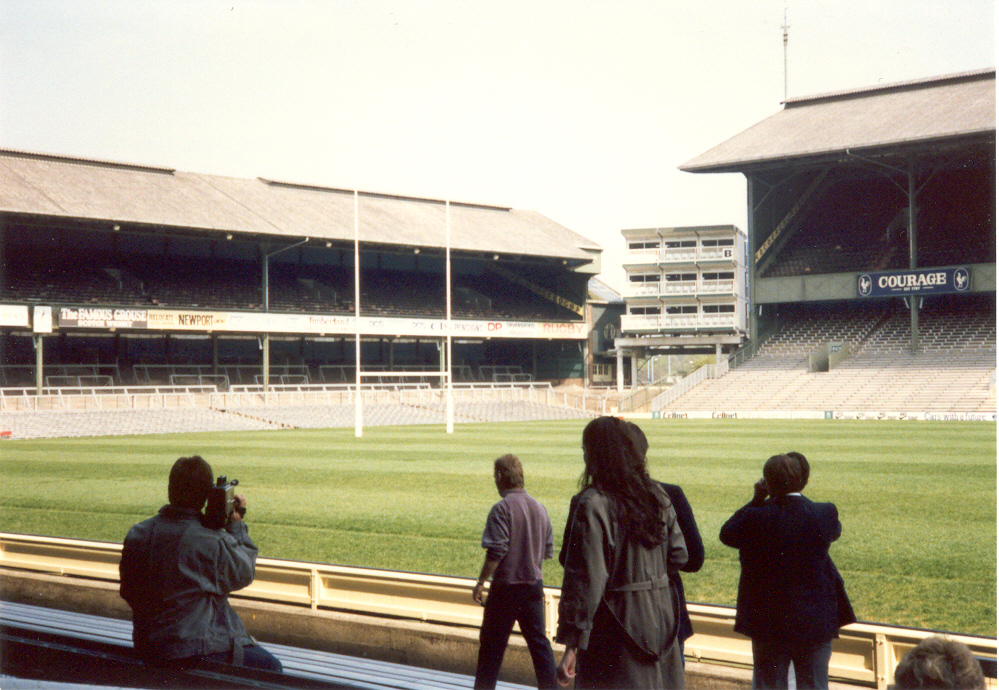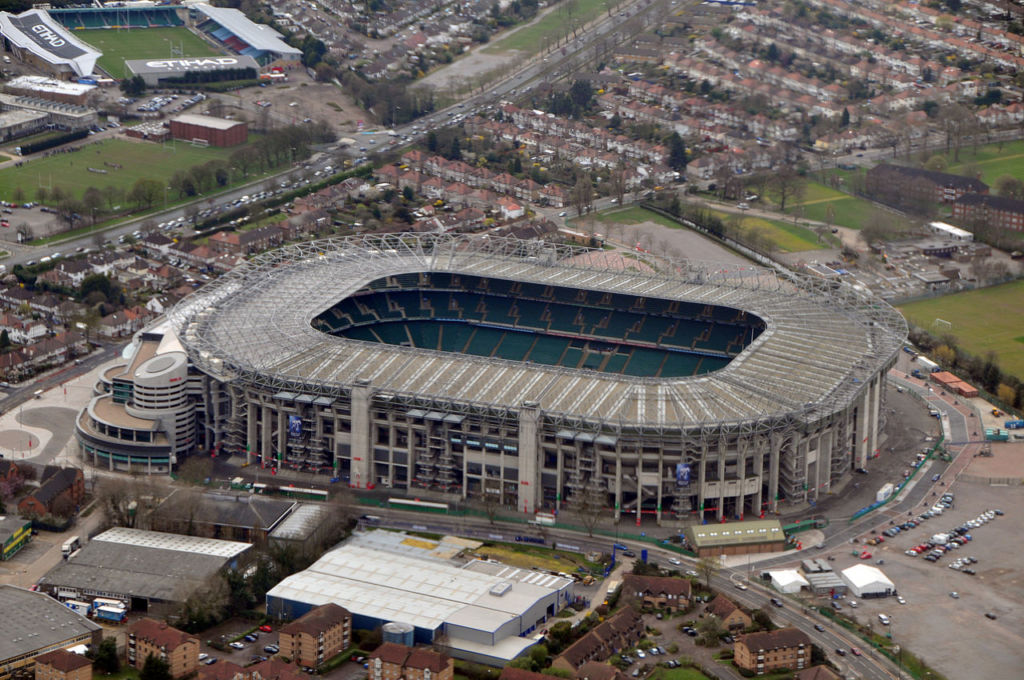A tale of two stadiums
Last weekend the Vikings went 6-2 with a win over the hapless Cleveland Browns in London. This time they played at Twickenham. When they last played in London, beating the Steelers in 2013, they played at Wembley. These stadiums are more different than you might know.
How to rebuild a stadium
Twickenham is the home of the England rugby union team. I often have to explain rugby union to Americans, and it’s a bit like American football. The England rugby team have been playing at Twickenham since 1907 and, when I started watching rugby in the late 1980s, the ground seemed to have changed little since the 1920s.

Twickenham in 1989
The stadium the Vikings played in last weekend is totally different. Completely rebuilt during the 1990s, the stadium was expanded to accommodate 75,000 people, all seated. A decade ago, this was expanded to the current 82,000.

Twickenham today
Perhaps the most impressive thing about this redevelopment is that the England rugby team didn’t miss a single match a Twickenham. They hosted the World Cup in 1991, Five then Six Nations matches, and autumn internationals, all while completely redeveloping an 80 year old stadium into a modern, world class venue.
How not to rebuild a stadium
With Wembley it was rather different.
Home of the England football side, the original Wembley Stadium was built in less than a year in 1922-1923. By the 1990s, it was past its best and the decision was taken to rebuild it. Unlike Twickenham, it was decided that Wembley would have to shut down completely while this was done. In the meantime, the soccer team would play its matches at club grounds around the country. Not to worry, when the stadium closed in October 2000 – the last match it hosted was a dismal 1-0 defeat against Germany – it was planned that the soccer team would be back playing at the new Wembley Stadium in 2003.
The England team next kicked off at Wembley in June 2007 (a dull 1-1 draw against Brazil). When the project was first proposed in 1996, it was estimated to cost £200 million. It ended up costing 3.75 times that, £750 million, and taking twice as long as planned. It also took about eight times longer than it had to build the old one eight decades earlier.
It’s all fun and games until the government gets involved
Why were the two redevelopment experiences so different? Both saw national stadiums of a similar age redeveloped into world class arenas with similar capacities at more or less the same time.
One big difference is funding. Twickenham was a private sector project. Rugby, though popular, is some way behind football in terms of support in England. There were few votes to be bought with money spent on the national rugby stadium.
Football, by contrast, is a close to a national obsession in England. As a result, British politicians have long felt the need to display an interest in it even when they plainly don’t know a wing-back from a deep lying center-forward. So, Wembley got taxpayers money because there were votes to be bought. The project was jointly funded by Wembley National Stadium Limited, the Football Association, Sport England, the Department for Culture Media and Sport, and the London Development Agency. Of these five, the last three are government agencies.
You might ask yourself why the British government needs three separate organisations to channel its stadium funding through, with separate staffs and offices. More fundamentally, you might ask yourself why the country that produced Shakespeare, Dickens, soccer, rugby, Powell & Pressburger, Larkin, and Bowie, among many, many others, needs a government department concerning itself with culture, media, or sport.
There’s a lesson in political economy here. Advocates of bigger government will tell you that it will act in ‘the public interest’ unlike us selfish individuals. But, of course, the people who staff this bigger government are drawn from the same pool of selfish individuals as the rest of us. Just as we act in our individual lives so will we act after going into government. This is one of the key insights of Public Choice economics.
This is why £750 million of largely taxpayers money was spent on an English football stadium. English football is not short of cash itself, but that’s where the votes were to be bought.
John Phelan is an economist at Center of the American Experiment.